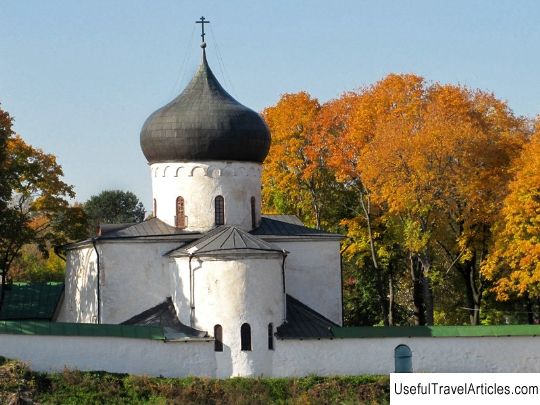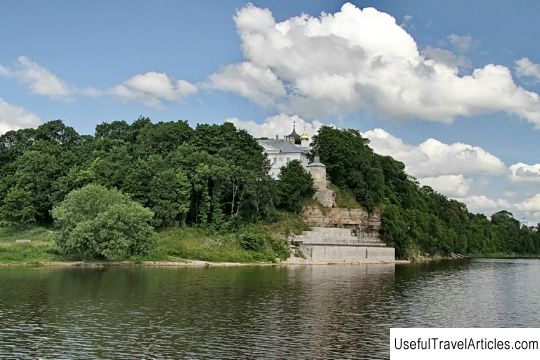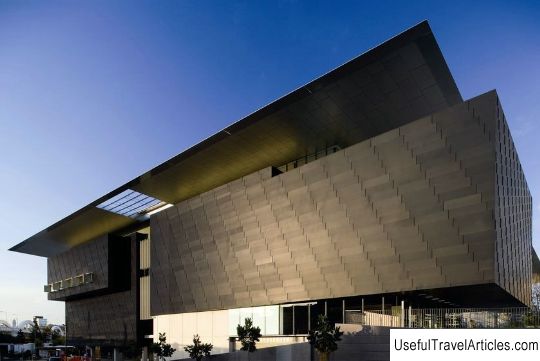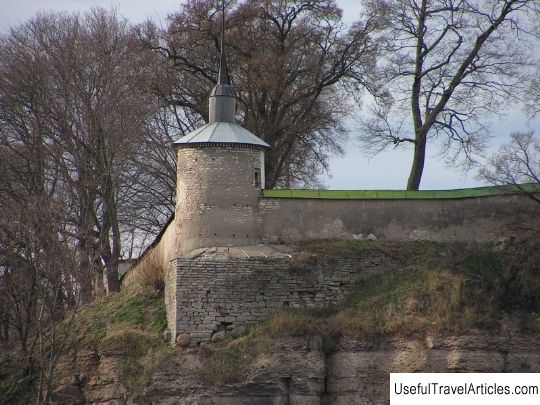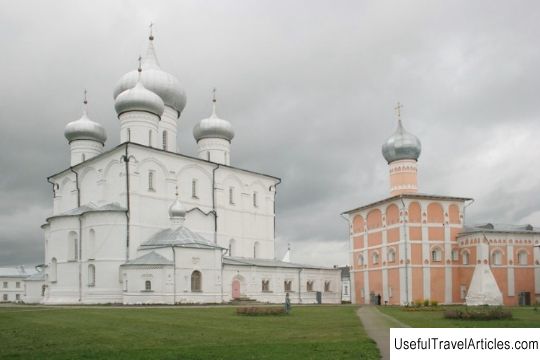Mirozhsky monastery description and photo - Russia - North-West: Pskov
Rating: 8,3/10 (600 votes) 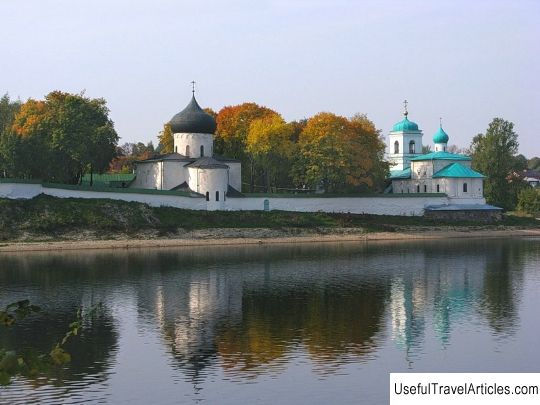
Mirozhsky monastery description and photos - Russia - Northwest: Pskov. Detailed information about the attraction. Description, photos and a map showing the nearest significant objects. Photo and descriptionThe fame of the Spaso-Preobrazhensky Mirozhsky Monastery, located in Pskov, is as great as its antiquity. In the middle of the XII century, the monastery was founded by the Novgorod archbishop of St. Niphont. He also invites the best Byzantine craftsmen to paint the walls of the Transfiguration Cathedral. Whitewashed frescoes were discovered quite by accident in 1858 during the renovation of the cathedral. In the 1890s, the plaster was repulsed and the priceless frescoes were made available for scientific research. Plots from the Old and New Testaments completely cover the walls and vaults of the cathedral. The restored frescoes amaze visitors with their skill of execution, brightness and catchy tones, classical iconography. The monastery was the bearer of spiritual enlightenment and the cultural center of the city. In the Middle Ages, there was a rich library here, scribes of spiritual literature worked, there was an icon-painting workshop, and the Pskov Chronicle was immediately written. Here the story `` The Word of Igor's Campaign '' was copied and preserved for posterity. The monastery has experienced many attacks and wars. Being outside the city walls, he was the first to receive enemy attacks. It was repeatedly devastated by the Germans, Poles and Swedes. But since the 16th century, the monastery has become one of the richest among other monasteries in Pskov. He owned land and peasants, traded in flax, hay, fish. They had their own flour mills, smithies, baths, household yards. However, at the end of the 18th century, the territory of the monastery was reduced. After the revolution, the monastery was closed, and the Pskov excursion station was located there. However, it should be said that during the Soviet era, restoration work was carried out in the monastery. In the early nineties of the twentieth century, monastic life resumed here. On the territory of the monastery are located the Stefanovskaya Church, the Rector's Corps, the Fraternal Corps, the Gate Bell Tower, as well as the brotherly cells and the Transfiguration Cathedral. The Brothers' building of the monastery with a bell tower, which was built on the site of wooden cells, joins the Stefanov Church. Today, in addition to monastic cells, there is a well-known icon-painting workshop where for many years the famous Russian icon painter of our time, Archimandrite Zenon, painted icons. Stefanovska church was erected in 1404 on the site where the older one was built. This is a standard gateway refectory church, installed on the basement, to which the Holy Gates are adjacent. In architecture, the features of the Moscow school are noticeable. The facade decor includes whitewashed brick cornices, ornamental belts and shoulder blades. Columns with fronts frame windows and doors. The interior of the church is decorated with a rich iconostasis. The iconostasis was executed by Archimandrite Zeno in Byzantine traditions. The bell tower was built in 1879. It is completed with a domed roof and joins the Holy Gates. The fraternal building, which has two floors, is attached to the bell tower, forming the front facade of the monastery on the north side. The abbot's building is located west of the Transfiguration Cathedral. A wooden floor was built on the old stone basement. The garden on the territory of the monastery is the prototype of the Garden of Eden. All these structures now surrounded by a monastery fence, are proof of the former glory and grandeur of this ancient monastery. In different years, the monastery, located at the arrow of two rivers, was subjected to severe floods, the last, rather strong, was in 2011. The Ministry of Emergency Situations provided assistance. Today the monastery is a functioning monastery.           We also recommend reading Drumlanrig Castle description and photos - Great Britain: Scotland Topic: Mirozhsky monastery description and photo - Russia - North-West: Pskov. |
